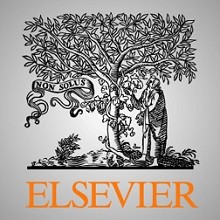
شواهد فیزیولوژیکی از هوش هیجانی و تنظیم هیجان در حالت های احساسی
Abstract
1- Introduction
2- Method
3- Results
4- Discussion
References
Abstract
Emotional intelligence (EI) is associated, both theoretically and empirically, with the ability to manage and regulate one's own emotions. Most evidence in this venue, however, comes from self-report measures. We tested the hypothesis that EI will associate with effective performance in an emotional regulation task in which participants were asked to self-induce emotional arousal and then to relax (modulation). One hundred twenty-seven young adults performed the task while we monitored their heart rate as an indicator of emotional responsiveness, and blood pressure as an indicator of long-term emotion regulation. They took tests of trait EI, ability EI, and trait anxiety. Structural equation modeling path analysis showed that ability EI, trait anxiety, and gender were associated with a factorial score of heart-rate variability, representing emotional regulation (arousal and modulation) indicators. The associations suggested that people with higher ability-EI scores more effectively regulated their emotional responses when asked to do so. The results also showed negative associations between ability EI and baseline blood pressure indicators. Results are discussed in light of theory and existing evidence on the link between EI and emotional regulation.
Introduction
The concept of Emotion regulation (ER) describes a group of psychological processes and behavioral tactics that people use to manage their own emotional responses in an adaptive manner (Gross & Thompson, 2007). The concept is perceived by many to be the basis of our emotional and social adaptation (Appelhans & Luecken, 2006; McRae et al., 2012). The ability to voluntarily understand, manipulate, regulate, and modulate emotional responses to fit situational demands has been defined as one of the basic manifestations of emotional intelligence (EI; Barrett & Gross, 2001; Mayer & Salovey, 1995; MacCann, Joseph, Newman, & Roberts, 2014) since the introduction of the concept. While some theories define ER as an integral component of EI, others see EI as the general potential for ER – thus viewing it as a manifestation or outcome of EI (Mayer & Salovey, 1995). Theorists suggest that people construct their own rules of ER and emotional display based on their experience, culture and personal needs (e.g., personality traits, motivations; Mayer & Salovey, 1995(. Behavioral evidence supports these suggestions, proposing that EI is a major resource enabling the development of ER related skills. In other words, individuals with high EI can manipulate and manage their emotions more effectively across a wide range of conditions and settings (Laborde, Lautenbach, Allen, Herbert, & Achtzehn, 2014). Studies show how ER tactics help protect individuals from dysfunctional emotional coping patterns (Mikolajczak, Petrides, & Hurry, 2009). Most explanations for the above findings rely on physiological processes that are assumed to underlie ER and, indirectly, EI: Bar-On, Tranel, Denburg, and Bechara (2003) and Krueger et al. (2009) associated emotion regulation with activity in the prefrontal lobe. Other accounts applied a social/interpersonal approach to ER and related skills (Morris, Silk, Steinberg, Myers, & Robinson, 2007) and discussed how ER is learned and honed through social interaction. Petrides and Furnham (2003), showed that people who are high in EI react more effectively than their low-EI counterparts to emotionally laden stimuli. Other studies showed that ER helps people recover from trauma (Tugade & Fredrickson, 2004), adapt more effectively in stressful work settings (Schutte, Malouff, Simunek, McKenley, & Hollander, 2002), or perform better in demanding academic settings (Libbrecht, Lievens, Carette, & Côté, 2014).
